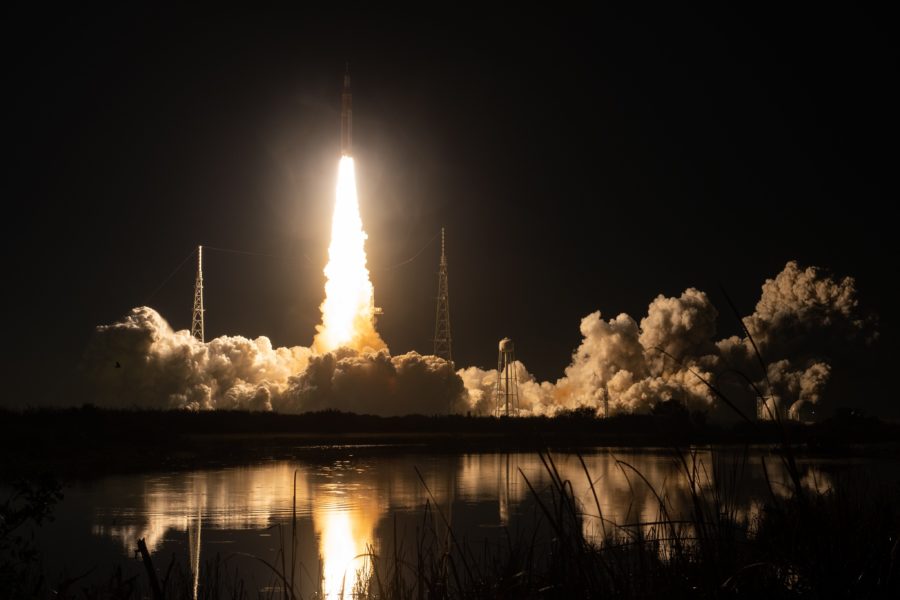A snag in Space Launch Delta 45’s testing of the Artemis 1 flight termination system contributed to a delay of the very-early-morning launch Nov. 16, one of two last-minute glitches in the final preparations to launch America’s new moon rocket for the first time.
Three members of a NASA “red crew” had already driven out to the launch pad at Kennedy Space Center in Florida to tighten some bolts on a valve of the Space Launch System rocket’s mobile launcher platform. The valve had been leaking liquid hydrogen propellant. That work took place right up to a 30-minute planned hold, or stoppage, in the launch countdown, a hold which began after midnight the morning of Nov. 16.
Had everything else gone according to plan, following the 30-minute hold the launch team would have started the 10-minute terminal countdown to launch—but instead, another issue intruded into the two-hour launch window that opened just after 1 a.m.
When the SLS’s rocket stages are all tanked up, liquid hydrogen and liquid oxygen—cooled to achieve their liquid states—boil off, to be continually replenished by the mobile launcher, explained NASA’s Derrol Nail as he relayed updates during the agency’s live-streamed broadcast of the countdown and launch. While the red crew worked, none could be replenished.
But with the valve tightened, the rocket’s core stage back up to 100 percent of liquid hydrogen, and the upper stage in “fast-fill” mode—and still without a delay announced to the 1:04 a.m. targeted launch time—attention turned to a problem reported by the Space Force’s Space Launch Delta 45. The delta manages the U.S.’s East Coast launch operations and had responsibility for a critical aspect of the mission: the flight termination system.
The launch delta “oversees the range here and makes sure that the airspace and the ocean out over the flight path is clear,” Nail explained. It also “has the responsibility to destruct the rocket should it go off track.”
A spokesperson for Space Launch Delta 45 confirmed to Air & Space Forces Magazine that the issue resulted from “a failed ethernet switch in our system at Cape Canaveral Space Force Station that provides the signals required to send command destruct signals to the launch vehicle if it goes off its nominal and safe path.”
About 25 minutes into what had been projected as a 70-minute job to replace the faulty switch, the delta needed more time: “They did just update the NASA test director to say that it’s going to take them a little bit longer because they’re going to need to re-verify this ethernet equipment once they have it installed,” Nail said. “At the moment, if we were launching right now, the range is ‘no go’ as a result of that bad ethernet switch.”
By 12:55 p.m.: “We’re clearly in a delay now,” Nail said. The upper stage’s liquid hydrogen was 95 percent filled, while the SLD 45 was “looking to start testing their connectivity to the rocket.”
Without the system safely tested, the launch couldn’t take place. The delta’s spokesperson explained why:
“These systems are critical to preserving public safety and are thus mandatory for safe and effective operations. With our onsite technical and maintenance team, we replaced the switch, retested the system, and were ready to support launch activities in time to support the Artemis launch timeline.”
Finally at 1:47 a.m., over a third of a way through its launch window, the first SLS’s rocket’s 8.8 million pounds of maximum thrust—hailed as America’s most powerful rocket ever—propelled the Orion astronaut capsule, dummies filling the seats, on its three-week uncrewed trip around the moon and back.
